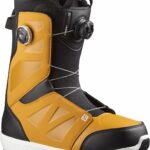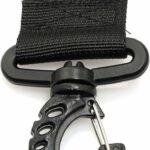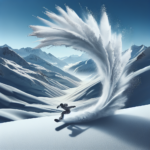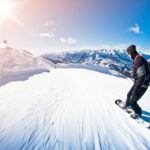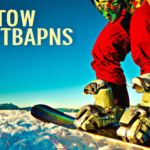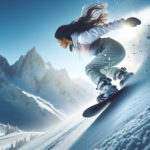In the exhilarating world of snowboarding, steep slopes present an unmatched challenge – a thrilling test of skill and courage. “How to Snowboard Steep Slopes?” brings you invaluable tips and techniques that course through the heart of this gorgeous beast, equipping you with the knowledge needed to conquer even the most daunting mountainside. It’s time to strap on your board and face those scares headfirst: this guide gets you ready to make the descent of your dreams.
Understanding the Fundamentals
Before you launch headfirst into snowboarding down steep slopes, it’s crucial to understand the fundamentals of this exciting sport.
Basic snowboarding techniques
Snowboarding involves certain core techniques. First, familiarize yourself with how to strap on your board, assume a basic standing position, slide downhill, and stop safely. Understanding these primary maneuvers will lay a solid foundation for your snowboarding journey.
Knowledge about equipment
Next, you need to know your equipment inside out. Your gear includes a snowboard, bindings, snowboard boots, snowboarding outfits, and safety gear like a helmet and goggles. Each has a specific purpose and being well-acquainted with them can make your ride smoother and safer.
Physical fitness and endurance
Snowboarding is physically demanding. You’ll need a good amount of endurance and strength, especially in your core and leg muscles. It’s also essential to have good balance and coordination. Regular physical fitness activities can significantly enhance your snowboarding experience.
Preparing for Steep Slopes
Once you’ve learned the basics, you can start preparing for the steep slopes.
Scoping the slope
Before you plunge down a steep hill, take some time to scope out the slope. Look out for any potential hazards such as trees, rocks, or sudden drops. Understanding the slope’s layout can help you navigate safely and effectively down it.
Understanding the terrain
A smart snowboarder knows that each terrain type requires different techniques and skills. It’s essential to note the terrain profile – whether it’s a uniform steep or has varying grades. Always be aware of the conditions you are riding in.
Safety preparation
Last but not least, safety always comes first. Make sure all your equipment is in good working order. And, having a game plan in case of emergencies – getting caught in a storm or suffering an injury – is also vital.
Starting Your Descent
Now that you’re thoroughly prepared, you can focus on starting your descent.
Approaching the slope
Approach the slope calmly and confidently. Don’t rush. Make sure your bindings are secure and take a moment to mentally run through your descent plan.
Positioning yourself correctly
Your body position is critical. Bend your knees and lean slightly forward, ensuring your weight is centered over your board. It keeps you balanced and ready to react to terrain changes.
Initial descent practices
Start with easy descents before moving on to steeper slopes. Practice shifting your weight from your toes to heels to control your direction and speed. It’s all about slow, steady progress.
Maintaining Control on Steep Slopes
Taking control of your movements is key to successful descents.
Proper weight distribution
On steep slopes, optimal weight distribution becomes even more crucial. You’ll need to shift your weight effectively to manage your speed and adjust your direction.
Carving techniques
Carving involves making turns on the snowboard’s edges without skidding, giving you more precise control. Practice transitioning smoothly between your edge turns while maintaining control.
Snowboarding in controlled turns
Controlled turns are vital on steep slopes. Whether you’re doing a heel-side or toe-side turn, focus on making smooth and steady movements. Don’t rush!
Techniques to maintain balance
A rider who can maintain balance on steep terrains is a successful snowboarder. Practice exercises that improve equilibrium, like yoga and Pilates. Remember to keep your core engaged while riding.
Mastering Turns on Steep Slopes
Turning is more than just changing direction. On steep slopes, it’s a skill that requires practice and precision.
Techniques for regular turns
Regular turns on steep slopes require balance, edging, pressure, and timing. Work on these elements separately before incorporating them into one fluid motion.
Executing ‘S’ turns
‘S’ turns are a series of linked turns with a fluid movement – much like the letter ‘S’. They’re not only fun to execute but are crucial for controlling speed on steeper terrains.
Managing speed during turns
It’s essential to manage your speed during turns, particularly on steep slopes. Carving and ‘S’ turns can help you manage velocity while descending.
Switching between edges smoothly
The ability to switch smoothly between your snowboard’s edges is key. It allows you to connect your turns seamlessly, giving you a smoother ride down the hill.
Managing Speed on Steep Slopes
Getting down a steep slope isn’t just about speed – it’s about controlling that speed.
Using skidding as a method of speed control
Skidding – slipping sideways while going downhill – can be used effectively to manage speed. However, this should be a controlled technique and not a result of losing balance.
Importance of line choices
The path you choose to take down a hill, or your ‘line,’ can significantly affect your speed and flow. Aim for clean, uninterrupted lines for smoother carving and speed control.
Carving for speed regulation
By now, you know carving plays an essential role in speed control. The sharper the turn, the slower your speed. So, using carving turns can be an effective way to regulate your speed on steep slopes.
Overcoming Fear and Psychological Tips
It’s perfectly natural to feel a bit scared when looking down a steep slope for the first time. Learning how to manage these fears can make your snowboarding experience a lot less stressful.
Psychological preparation
Mental preparation is just as important as physical readiness. Visualize your runs, stay positive, and remind yourself that it’s okay to take things slow and steady.
Overcoming the fear of heights
If you have acrophobia, or the fear of heights, snowboarding down steep slopes can be intimidating. But with exposure therapy and practicing relaxation techniques, it can be overcome.
The role of incremental learning
Don’t hesitate to start small. Gradual learning allows you to build confidence and expertise over time. Starting with gentler slopes and gradually working your way up to steeper descents is a strategic approach.
Maintaining focus and calm
Part of overcoming fear is learning to stay calm and focused. Shut out distractions and concentrate on your technique and the path before you.
Dealing with Varied Snow Conditions
In the world of snowboarding, different snow conditions require different approaches and techniques.
Ah, the allure of fresh powder! While it’s fun, it can be more challenging to navigate. Lean back a bit to keep the front of the board up and avoid digging the nose of your snowboard into the snow.
Handling icy slopes
Icy slopes demand careful, softer turns. Learn how to make ‘sliding turns’ where you rely more on your board’s edge to gain traction.
Techniques for slushy snow
Slush requires a blend of the two techniques. You’ll need to maintain momentum to keep from getting stuck, yet be ready with quicker turns and shifts in tactics.
Advanced Techniques for Steep Slopes
Ready to step up your game? Let’s look at some advanced techniques for steep slopes.
Hop turns
Hop turns involve a small jump at the end of each turn, which can be handy in really steep terrain where normal turning becomes difficult.
Pivot turns
In a pivot turn, only the board’s nose stays in contact with the snow, creating a quicker, tighter turn. It’s useful for navigating in narrow, treacherous areas.
Dynamic carving
Dynamic carving means using your entire body to carve down the slope for more speed and a deeper carve. It’s a challenging but rewarding technique.
Post-Snowboarding Recovery Tips
After a long day on the slopes, it’s essential to allow your body and mind to recover.
Importance of stretching post snowboarding
After the adrenaline rush of snowboarding on steep slopes, it’s essential to stretch out those worked muscles. It promotes muscle recovery and flexibility.
Proper hydration and nutrition
Hydration and nutrition should be a top priority post-snowboarding. Drink plenty of water and replenish your body’s fuel with a balanced meal containing protein, carbohydrates, and healthy fats.
Mental relaxation and recovery
And let’s not forget mental recovery. Take the time to unwind and reflect on your day. A calm mind leads to a revitalized body.
So there you have it, your comprehensive guide to snowboarding steep slopes. Remember to stay safe, keep practicing, and most importantly, brace yourself for an exhilarating ride. Happy snowboarding!
- What Snowboard Bindings Should I Get? - January 23, 2024
- What Size Screws For Snowboard Bindings? - January 23, 2024
- How To Snowmobile On Water? - January 23, 2024

